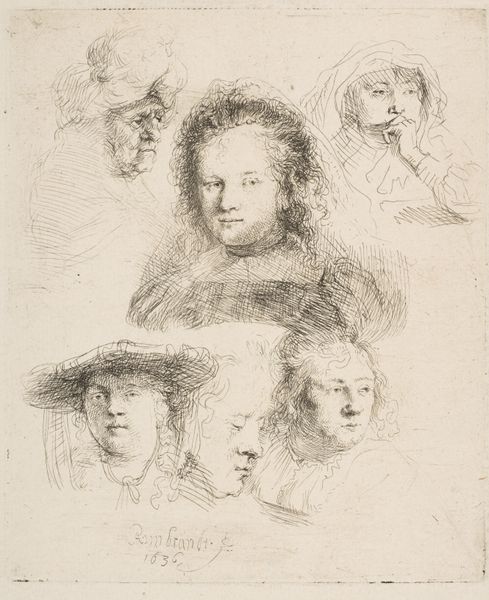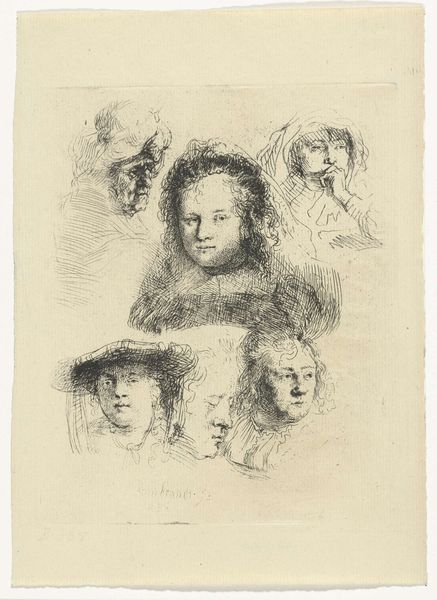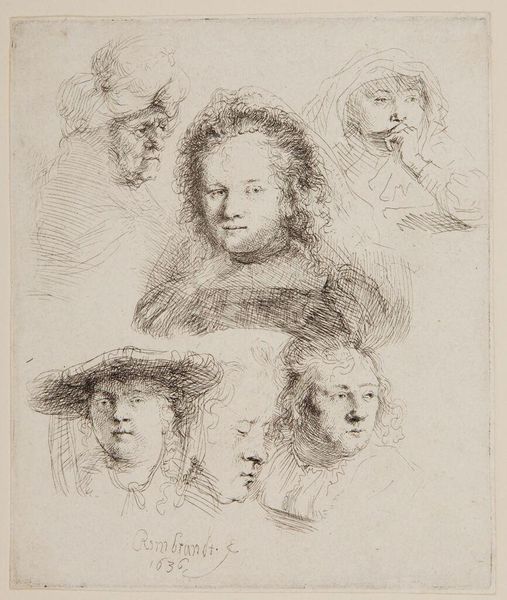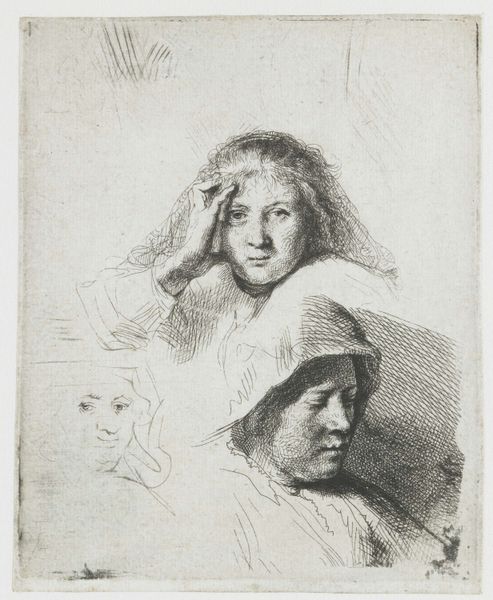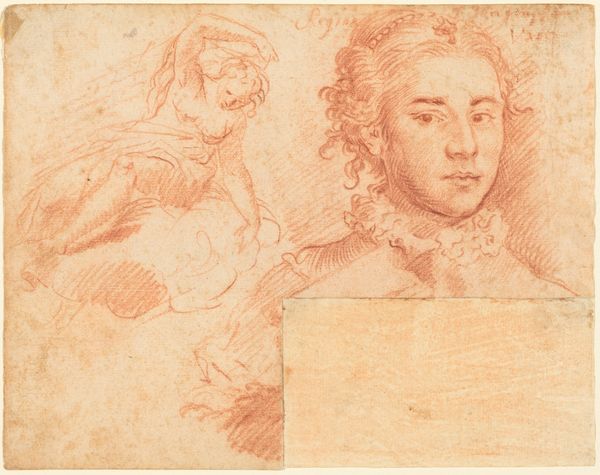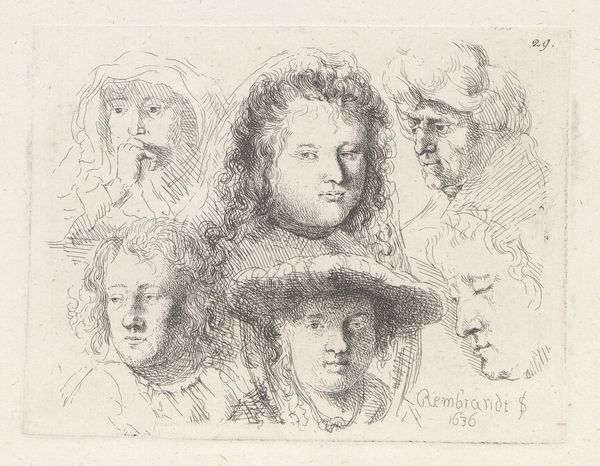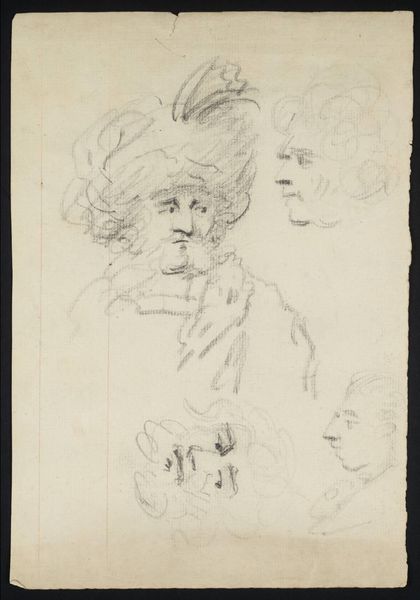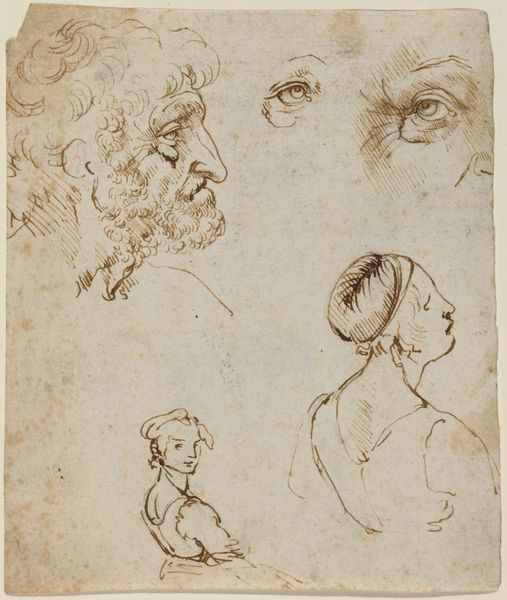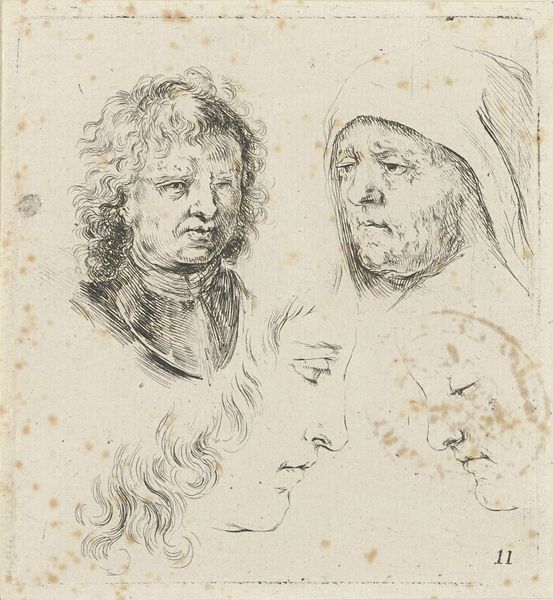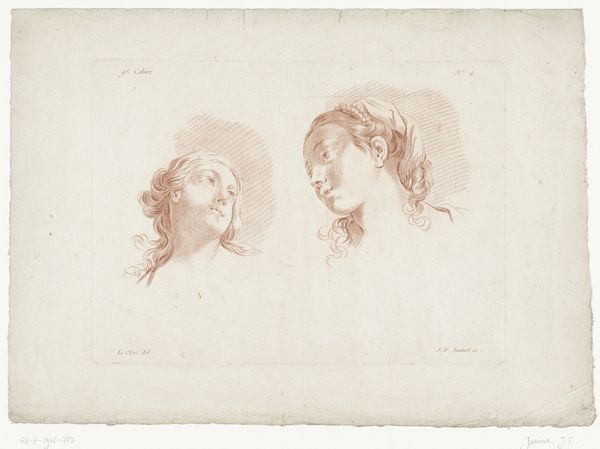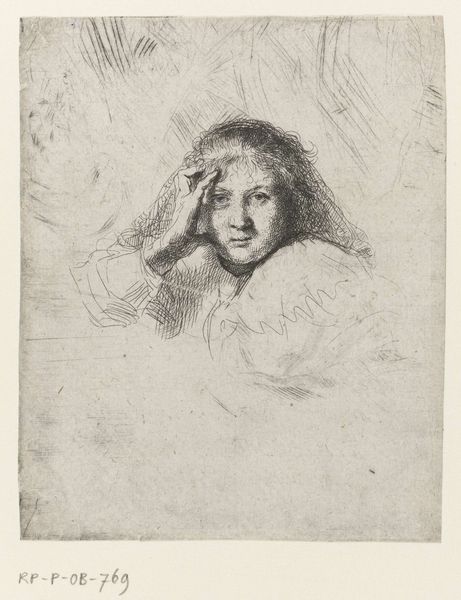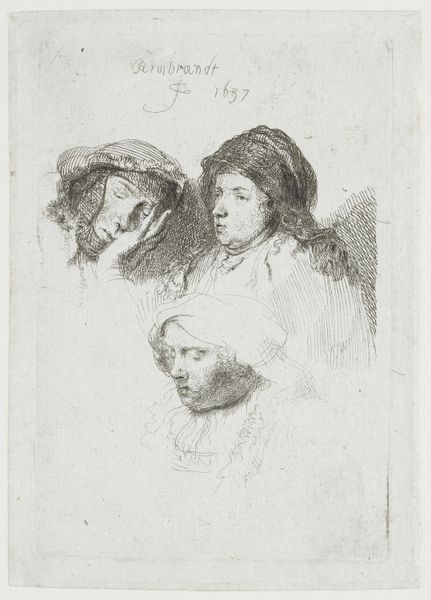
drawing, paper
#
portrait
#
drawing
#
baroque
#
dutch-golden-age
#
paper
Dimensions: height 153 mm, width 133 mm
Copyright: Rijks Museum: Open Domain
Editor: We're looking at "Studies of the Head of Saskia and Others," a drawing on paper by Rembrandt van Rijn, created after 1636, currently held at the Rijksmuseum. There's a beautiful immediacy in the sketched faces, like glimpses into different moods. How can we understand these sketches within their social and historical context? Curator: That's a wonderful question. Rembrandt's drawings weren't simply exercises in capturing likeness. Consider the evolving status of artists in 17th-century Holland. The Dutch Golden Age saw a burgeoning art market and increasing professionalization. What role did studies like this play in shaping his public image and securing patronage? Editor: So, was this for marketing? Practice? Did the market play that big of a role in such personal drawings? Curator: Both. While ostensibly private sketches, we also need to view these through the lens of emerging art market dynamics. Rembrandt was savvy, understanding that glimpses into his creative process – even seemingly spontaneous ones – added value and mystique. Consider how portraits themselves reflected social standing and power; how did these preparatory sketches contribute to that perception? Were they viewed as demonstrations of skill or personal affection for Saskia, shaping the public’s reception of him? Editor: That's fascinating, considering his future market value and lasting name as an artist. Seeing it as partially strategic helps to contextualize them. So it shows his skill and personality, rather than pure emotion, for potential clients? Curator: Exactly. Think about how museums now frame such "intimate" works – are they truly private when displayed publicly? It influences our reading, shaping our appreciation. The very act of placing it in the Rijksmuseum changes it. Editor: That perspective makes me see the power dynamics between the artist, patron, and the evolving art world much more clearly. The act of observation is now changed knowing his choices and public's opinions might affect the piece's perception.
Comments
No comments
Be the first to comment and join the conversation on the ultimate creative platform.
